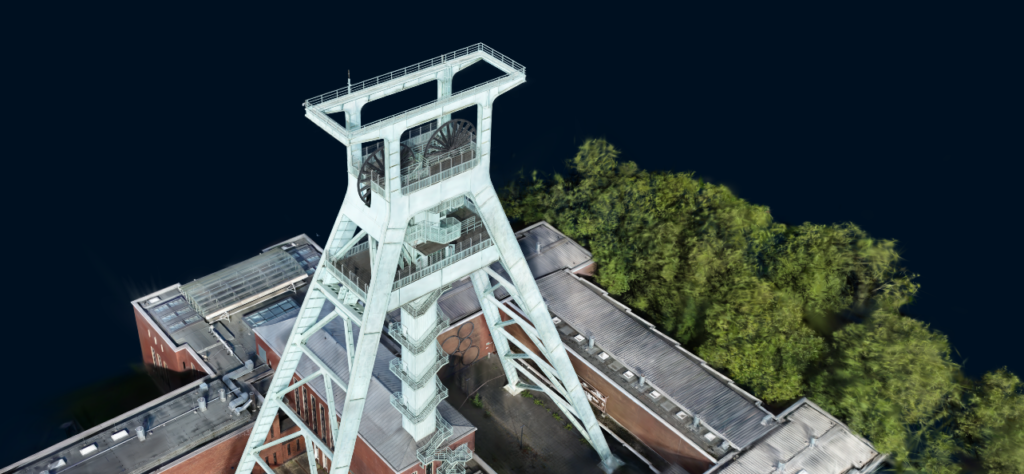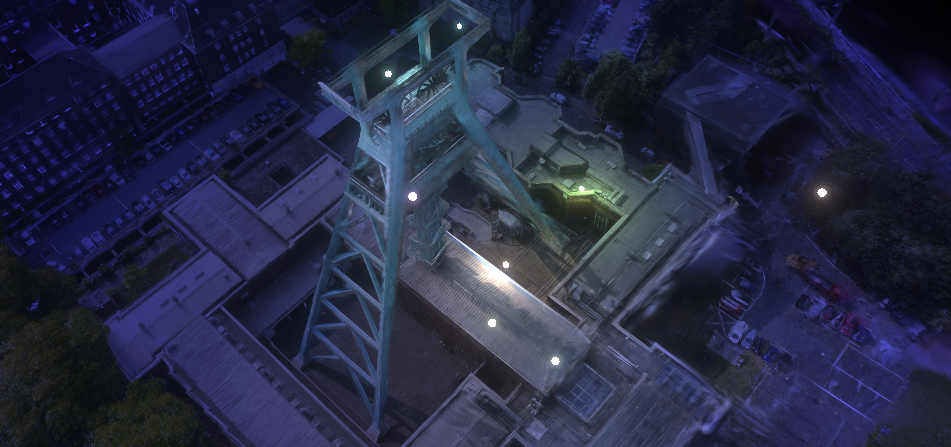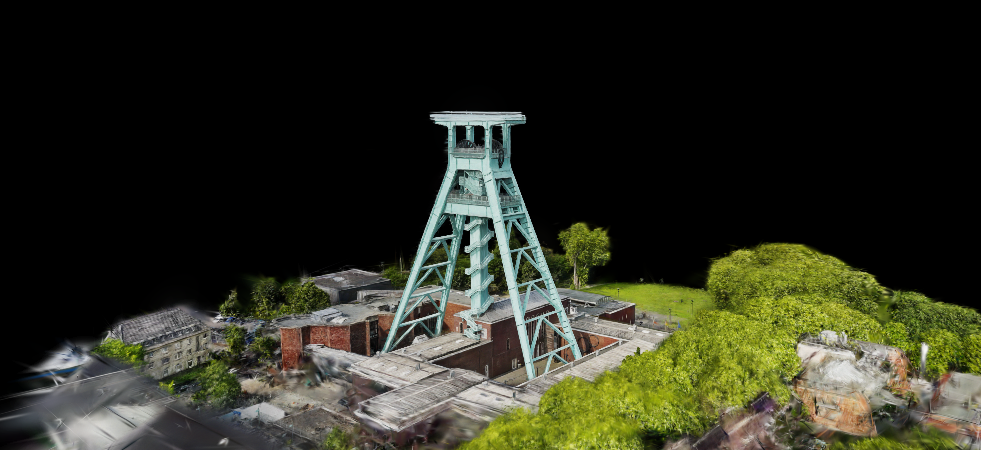About the Experiment
This experiment explores the possibilities of 3D reconstruction based on drone imagery, utilizing modern techniques such as Gaussian Splatting to create highly realistic digital models.
Data Basis
For the reconstruction, 546 images captured by a drone were used. The images had a resolution of 5472 × 3648 pixels and were directly fed into the workflow without pre-processing or selection. The total dataset size was approximately 5.5 GB.
Tools & Workflow
Postshot
- The drone images were first processed using Postshot to generate Gaussian Splats.
- The images were resized to 1600 pixels in width to optimize processing efficiency.
- Processing was performed overnight, using mostly default settings on a mobile workstation equipped with an A5000 GPU (24 GB VRAM).
PlayCanvas SuperSplat
- The generated Splats were then edited using PlayCanvas SuperSplat.
- Cropping and Clean-Up functions were used to improve the reconstruction quality and remove incomplete backgrounds.
- The Splats were also compressed—reducing the original file size from approximately 700 MB to 29 MB without significant quality loss.
PlayCanvas WebComponents
- The final Gaussian Splats were seamlessly integrated into the website using PlayCanvas WebComponents.
- This allows them to be viewed interactively directly in the browser.
- Unity Engine
- As an exploratory step, the compressed Splats were imported into the Unity real-time engine.
- Experiments are ongoing to evaluate how Splats can be made accessible within immersive media environments.
Results & Conclusion
This experiment demonstrates that realistic and optimized 3D reconstructions can be generated from simple drone imagery. By combining Gaussian Splatting, efficient data processing, and interactive web visualization, high-resolution models can be presented with minimal storage requirements.



